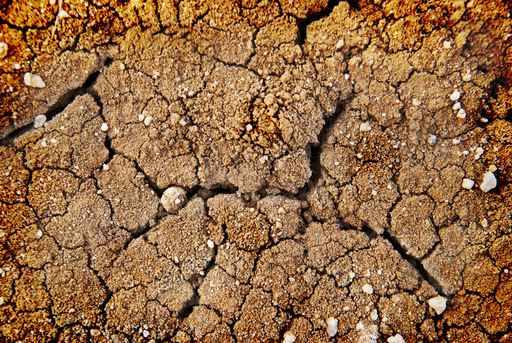Today's topic is how we can delete object key in javascript with example. If you require to remove key value from your existing jquery object then you can do it using delete operator. We can simply remove specific index from object array.
The way to go about deleting an object property with native javaScript is to use the delete keyword. If I really want to I can use that as a way to delete an object key of the data object of a view, but the view will not update to reflect that. However I can use the force update method to update the view afterwards to do so. The filter() method creates a new array with the elements that pass the test provided by the function. If no elements pass the test, the function will return an empty array. We will use the arrow function to demonstrate the filter() method.
Consider we have an array of objects and we want to add the property to the objects in the array. Here I have used the array method .forEach to iterate through the array element and add the property to the object. If you are a still didn't get how you can delete key from json object than you can bellow full example. If for some reason I want to delete an object property in a vuejs data object, the view might not update when doing so. There is the force update method that can be used to update a view if necessary that might help in these kinds of situations. However there is the built in Vue delete method as well that can also be used to delete an object property and update the view in one shot.
The purpose of the delete operator in Javascript, as you might think, is to delete things. More specifically, it will delete object properties. Therefore, the delete operator is designed to use the object properties. When in strict mode, if delete is used on a direct reference to a variable, a function argument or a function name, it will throw a SyntaxError. Therefore, to avoid syntax errors in strict mode, you must use the delete operator in the form of delete object.property or delete object['property']. In line item 4, we had just called delete() again on the myObject instance.
In fact, it is only after we call delete() directly on the superObject instance that we are able to completely remove the "name" property from the object . In this template I am using the vue for directive to repeat an element for each item in a collection, in this case an array of names. There are many other vuejs features being used such as the methods option, and vue on directive. So that is the basic idea at least of the vue delete method, I pass the property of the data object I want to delete, and then a key as the second argument. The object property will then be deleted, and the view will render. There are a number of other ways that the delete method can be used to delete an object property from the data object though, so lets look at a few more examples of this one.
Omit function provided by the Lodash library which can be used to delete property from an object in javascript. Before destructuring, we would typically use the delete keyword to remove properties from an object. When it comes to my collection of canvas examples I have one canvas example centered around the idea of an object pool.
This is a fixed set of objects that have display object like properties such as x, y, width, and height for example. When it comes to a project where I am using Vuejs as a central front end framework I often find myself doing something along those lines. I just create a set number of objects and then just mutate the properties of those objects as needed. I will provide a three way to remove key value from json object.
Delete operator will allows to remove item from an object. It will only check the keys and values contained by the objects; it will not check the objects' prototypes. If either of the values are not objects, they will be compared using the callback function. If the values are both an object, it will recurse into the objects, checking if their keys/values are equal. If the either of the values are not objects, they will be checked using the callback function. Returns a Set view of the mappings contained in this map.
The set is backed by the map, so changes to the map are reflected in the set, and vice-versa. The set supports element removal, which removes the corresponding mapping from the map, via the Iterator.remove, Set.remove, removeAll, retainAll and clear operations. It does not support the add or addAll operations.
This asymmetric prototype traversal behavior has never actually caused me any problems. Typically, I only use delete() in conjunction with objects that exist outside of any complex prototype chain (ie. object literals specifically designed for value indexing). But, understanding this JavaScript behavior will certainly make me a bit more cognizant about when it's a good idea to apply the hasOwnProperty() method. Although a solution like this might work there is the built in vue delete method that can be used to both delete the object key, and update the view in one shot.
Here, startIndex is the zero-based index from which we start the extraction. A negative index can be used, which indicates an offset from the end of the sequence. For example, slice(-3) extracts the last three elements in the sequence. If startIndex is undefined, the slice() function starts from index 0, whereas if startIndex is greater than the index range of the array, an empty array is returned. The method splice() might be the best method out there that we can use to remove the object from an array.
It changes the content of an array by removing or replacing existing elements or adding new elements in place. The syntax for the splice() method is shown below. One can delete the property from the object using keyword delete . The delete keyword deletes both the value of the property and the property itself. After deletion, the property cannot be used before it is added back again.
JavaScript object is a collection of properties, and a property is an association between a name and a value. In the initial days of my programming career, I found it difficult to work with the object manipulation. So today I would like to list out the ways to add, update and delete the properties from an object.
The semantics of the delete operator are a bit tricky, and it can only be reliably used to remove properties from objects. Pass anything else to it, and you may or may not get the desired result. If a, b and c exist as property names on data, then variables will be created containing the values of the object properties. If the property names do not exist, you'll get undefined. This new way to remove object properties gives us a cleaner way to write JavaScript, with less code and better readability - as well as it being an immutable operation.
Thedelete operator removes the given property from the object. The successful deletion will return true; otherwise, thefalse will be returned. However, it is essential to consider the following cases. Javascript delete is a built-in operator that removes the property from the object. The delete operator removes both the value of the property and the property itself. If there are no more references to the same property, it is eventually released automatically.
You can use the delete operator to completely remove the properties from the JavaScript object. Deleting is the only way to actually remove a property from an object. An object in JavaScript is a collection of key-value pairs.
One of these key-value pairs is called an object property. Both keys and values of properties can be of any data type - Number, String, Array, Object, etc. The delete operator is designed to be used on object properties. The delete operator removes a given property from an object. On successful deletion, it will return true, else false will be returned.
The JavaScript delete operatorremoves a property from an object; if no more references to the same property are held, it is eventually released automatically. Delete object property if existent and returns a boolean indicating succes. It will also return true if property doesn't exist. Returns a Set view of the keys contained in this map.
If the map is modified while an iteration over the set is in progress (except through the iterator's own remove operation), the results of the iteration are undefined. The set supports element removal, which removes the corresponding mapping from the map, via the Iterator.remove, Set.remove, removeAll, retainAll, and clearoperations. This implementation provides constant-time performance for the basic operations , assuming the hash function disperses the elements properly among the buckets.
Iteration over collection views requires time proportional to the "capacity" of the HashMap instance plus its size (the number of key-value mappings). Thus, it's very important not to set the initial capacity too high if iteration performance is important. Meaning, that change will be replicated in all objects that extend that level of prototype. Since a the "set" is not on the instance itself, but rather on a property of that instance, the prototype structure doesn't dictate behavior. Of course, there is no function "getPrototype()" and things like __proto__ are not cross-browser compatible.
I have seen, however, in some of the MVC frameworks, that they actually add a prototype feature into the object properties during class creation. The delete method of the vue instance does not actually delete an object it just sets the active flag back to false. At which point the object can in turn be used for something new. Think about how a file system works on a hard drive for a moment, when you go do delete a file does the data disappear?
Nope the area on the hard drive where the data for that file is just ends up being flag as empty space. As such when it comes to writing new data to the file system that are of the disk can now be used for something else. So how about a full copy and past example of the vuejs delete method as well as a whole bunch of other vuejs features. The value 0 in the splice() method indicates the first index of the array, that is, the first object. It means that we will start removing from the first index. The next value, 1 in the method, specifies that the method will remove one item from the starting point.
Thus, the example below will remove the first object in the array. The index option refers to an integer that specifies at what position to add/remove items. We can also use negative values to specify the position from the end of the array. The count option is optional and indicates the number of items to be removed.
The items1, ..., itemX option is also optional and can be used to add new items to the array. We have introduced how to empty an array in JavaScript in another article. In this article, we will learn how to remove an object from a JavaScript array. The article will introduce and implement methods like splice(), slice(), and filter(). A sort operation allows you to configure the order in which Realm Database returns queried objects.
You can sort based on one or more properties of the objects in the results collection. Realm Database only guarantees a consistent order of results if you explicitly sort them. I'll create an object called pizza below, and add key-value pairs to it. Some APIs can prevent an object from being deleted before all references to it have been cleaned up.
The JavaScript delete operator removes a property from an object. This is a short tutorial on how to remove a property from a JavaScript object. To do this, we will be using the delete operator. Let's say we have a key that perhaps a user has supplied that they want to delete. The delete operator is used to remove a property from an object.
In the code snippet, we use thedelete operatorto delete a test property from each object. On each iteration use the delete operator to delete the specific property from the object. The necessity of a Javascript delete operator is whenever you want to remove a property from an object.
You need to keep in mind that the delete operator should not be used on predefined JavaScript object properties. In the example above, the delete operator is used to remove the name and score properties from the student object. The first mutable approach is to use the delete object.property operator. Let's see 2 common ways on how to remove properties from an object in JavaScript — using the delete operator and object destructuring combined with object rest . The delete operator allows you to remove a property from an object.
When the delete operator removes an array element, that element is no longer in the array. In the following example, trees is removed with delete. This includes properties of built-in objects like Math, Array, Object and properties that are created as non-configurable with methods like Object.defineProperty().
Returns a new object containing all properties where callback returns true, similar to Array/reject. It does not use properties from the object's prototype. Useful for cases where you need to check if an object contain a nested property.
















































